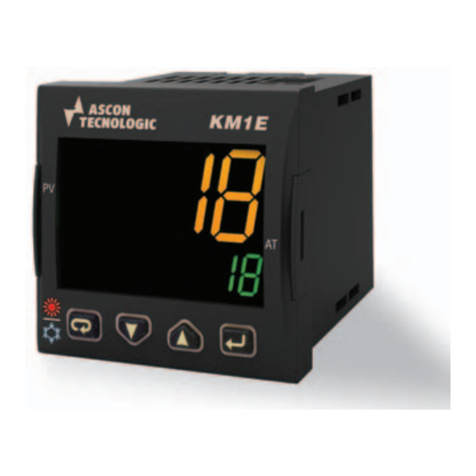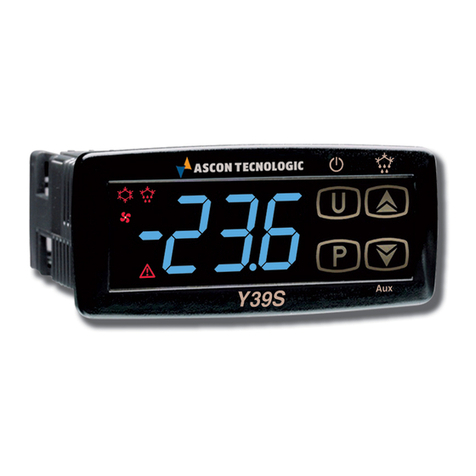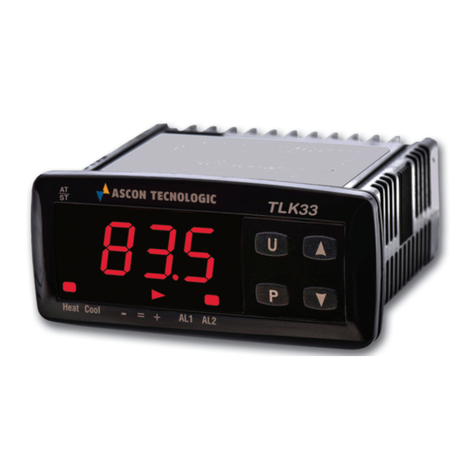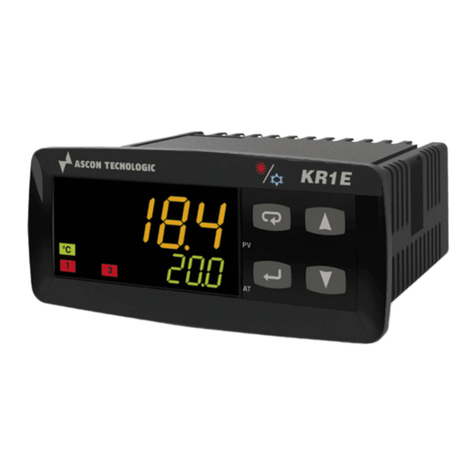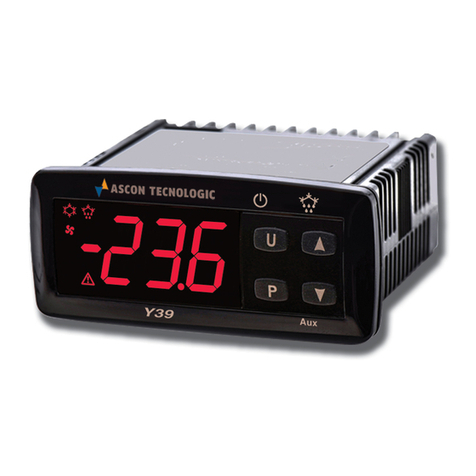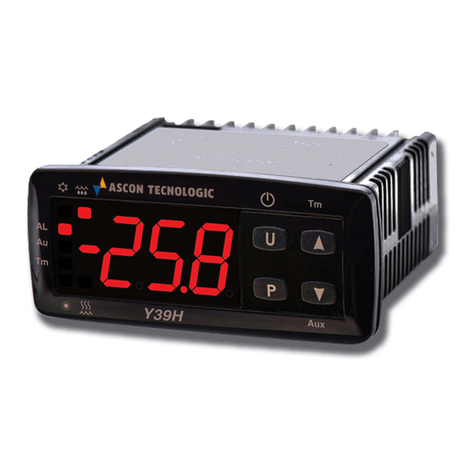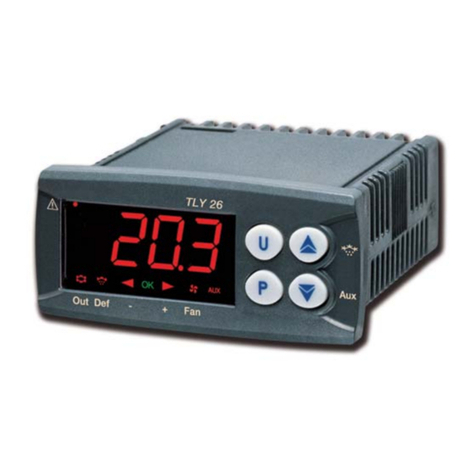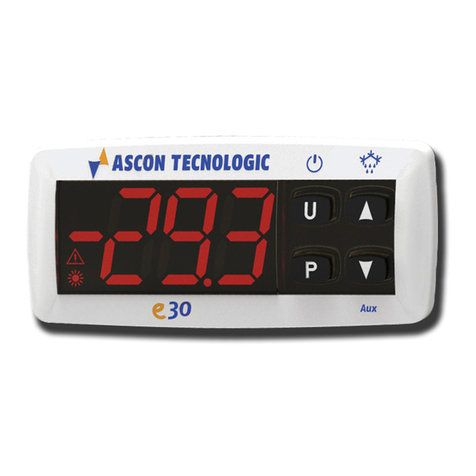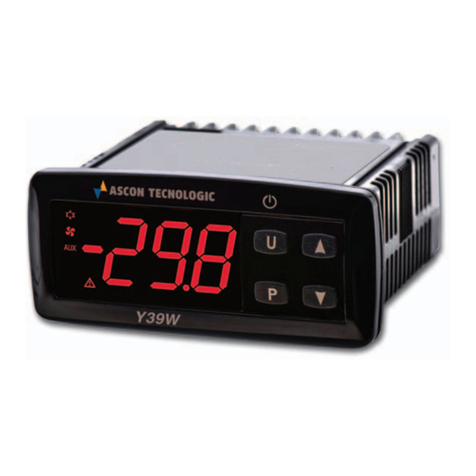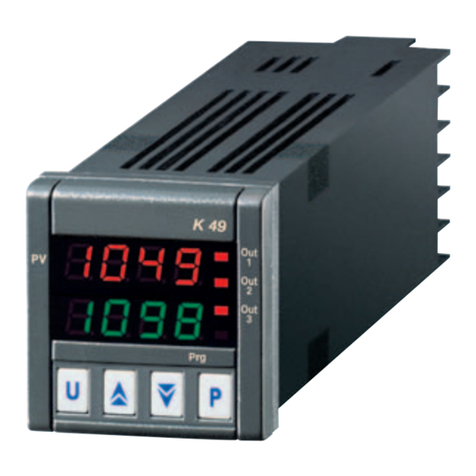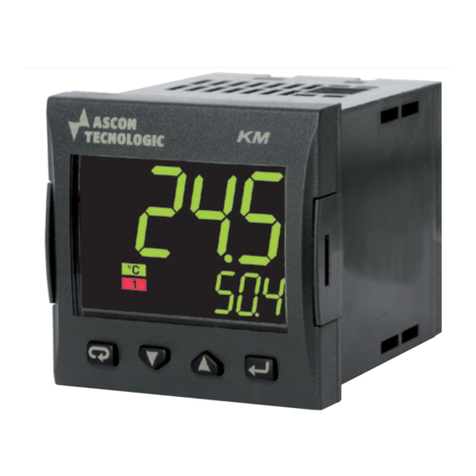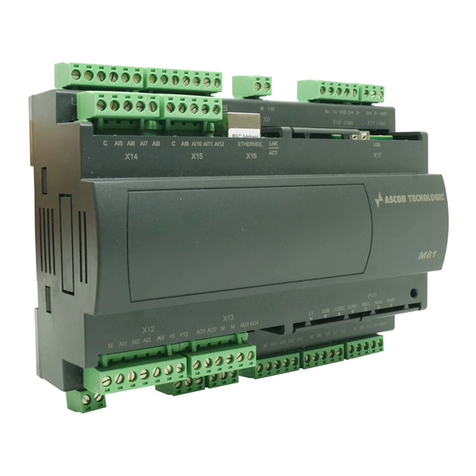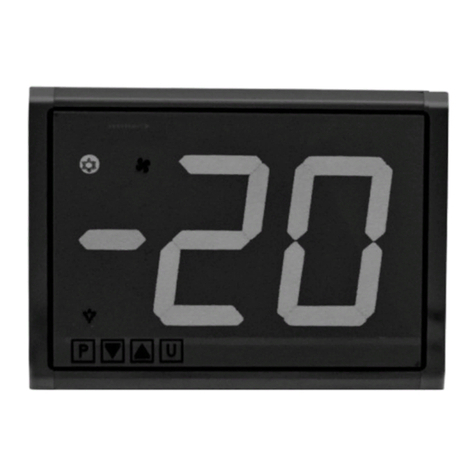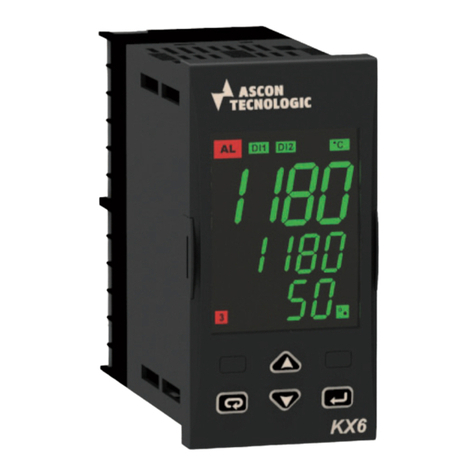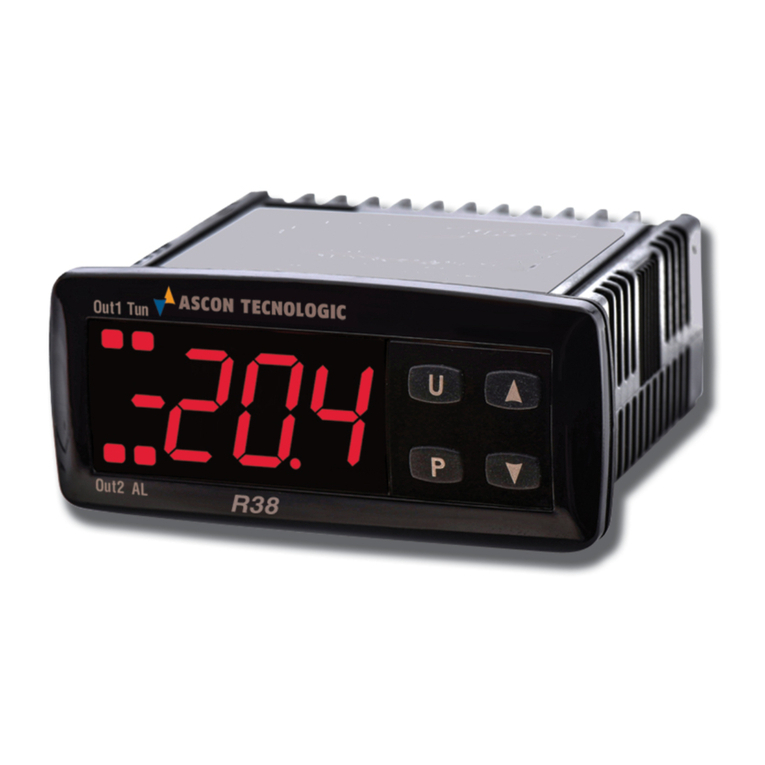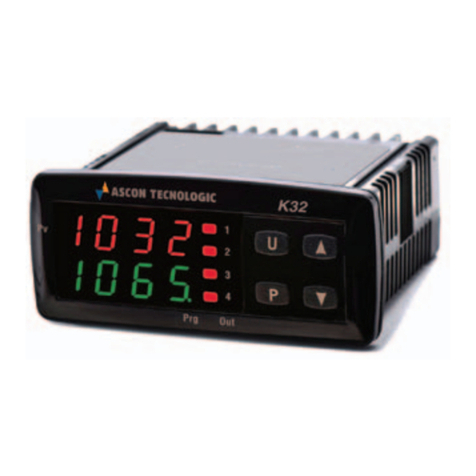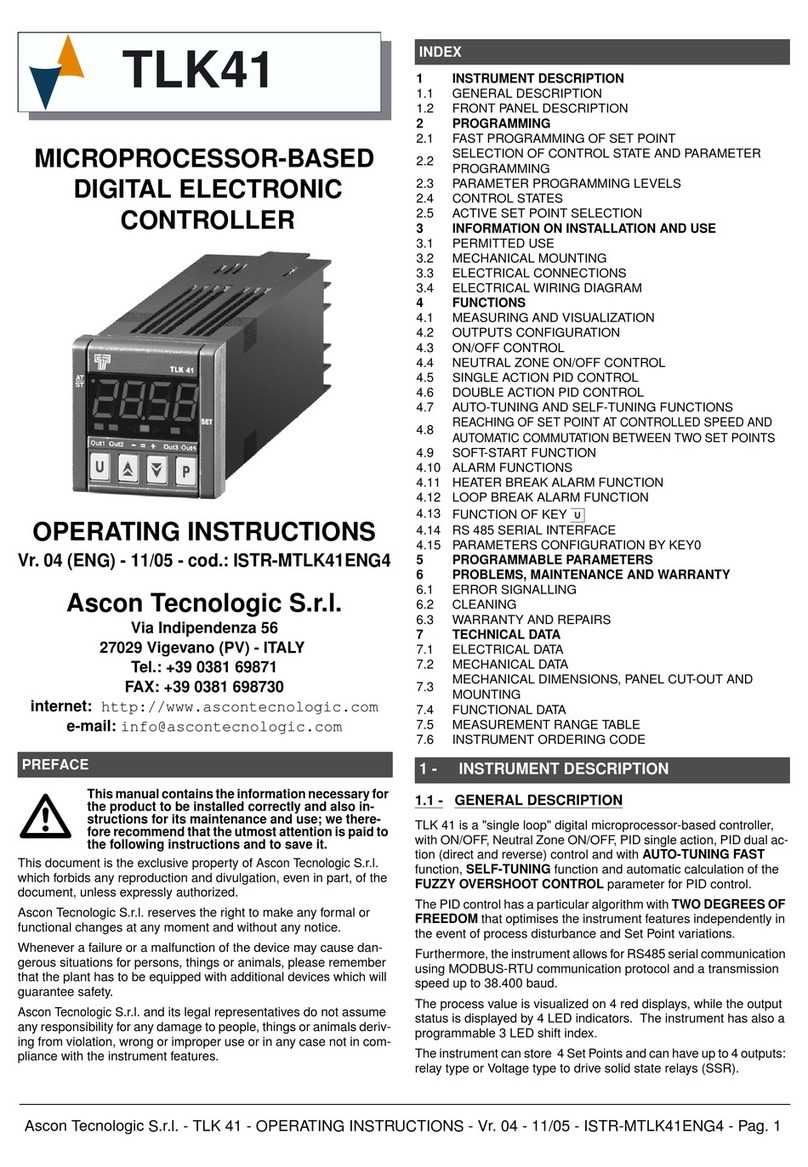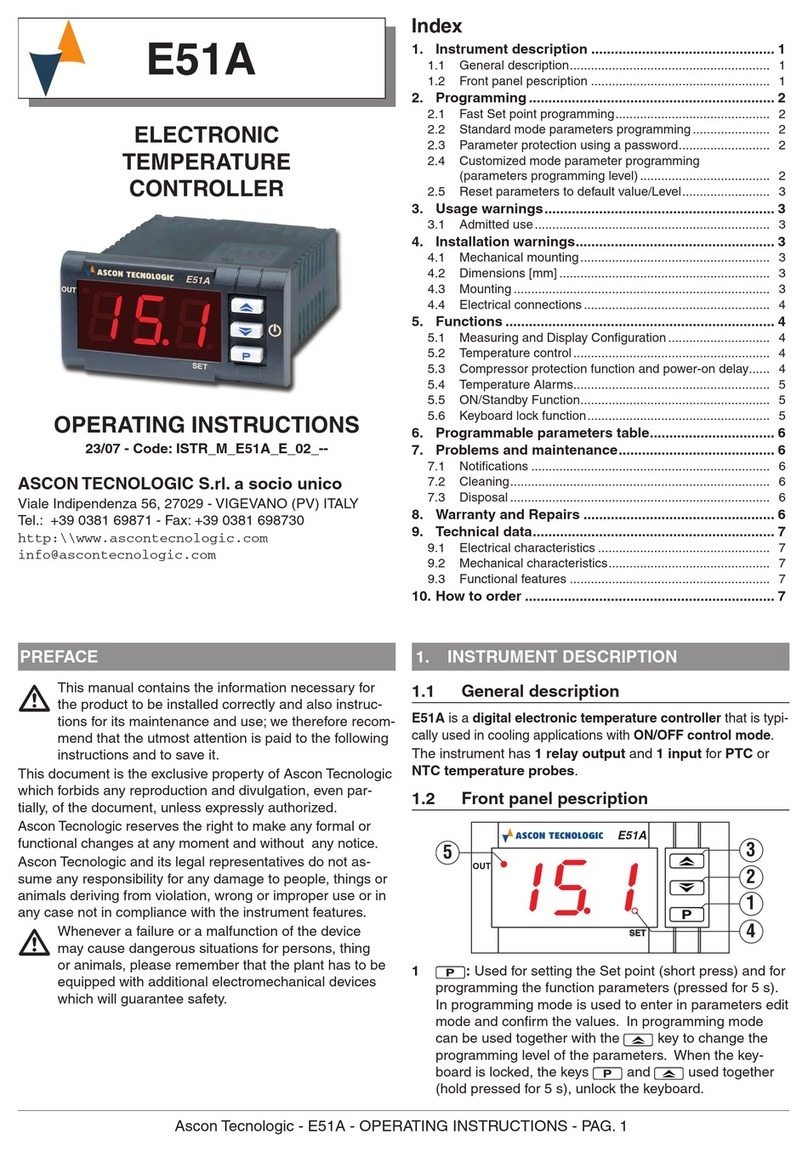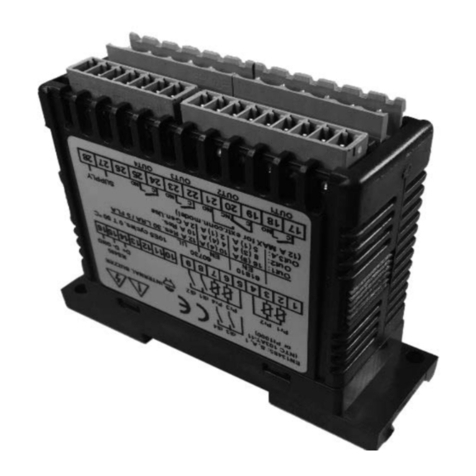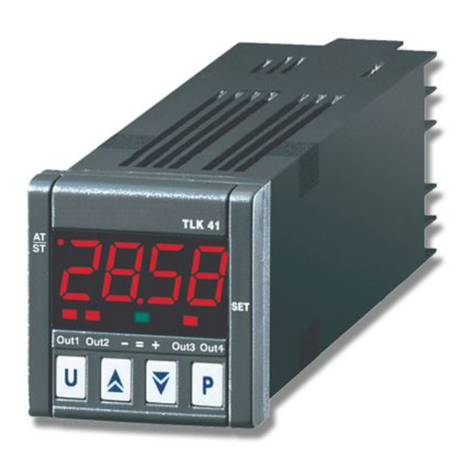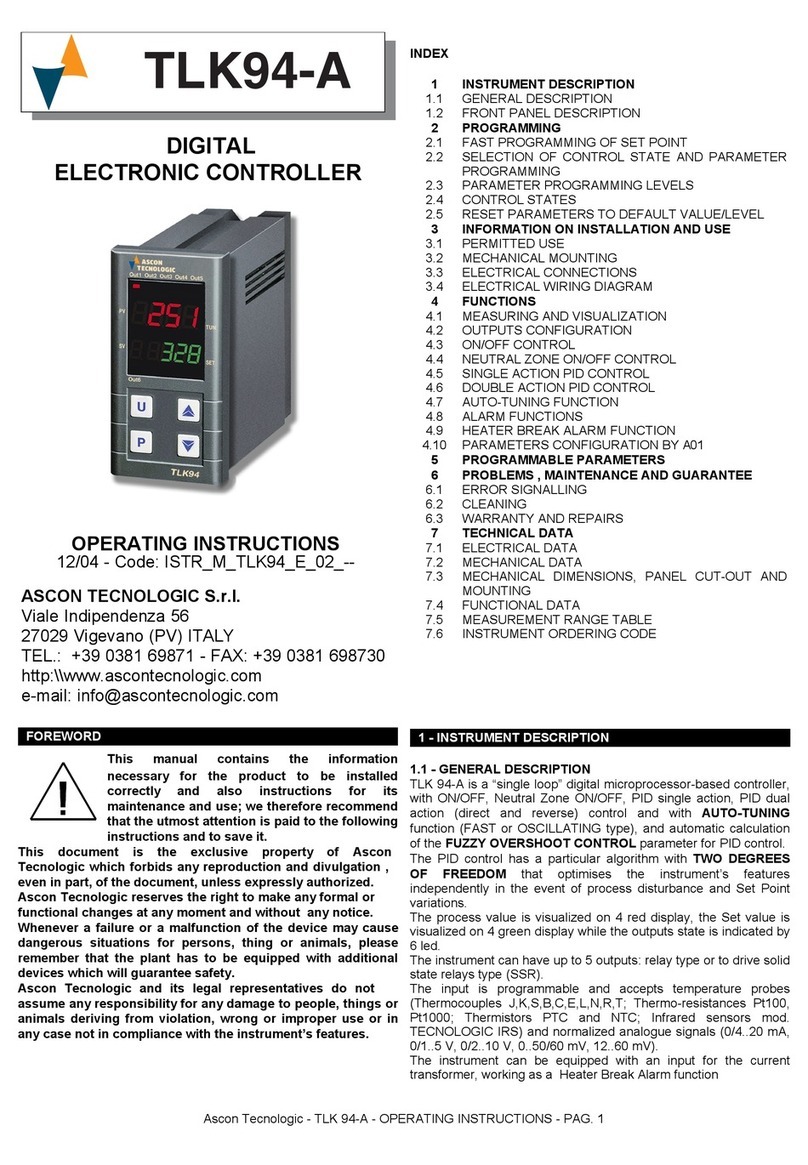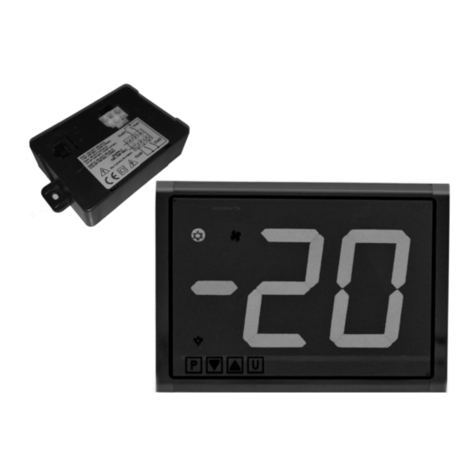
Ascon Tecnologic - K_5P SERIES Line - ENGINEERING MANUAL - PAG. 9
5 CONFIGURATION PROCEDURE
5.1 Introduction
When the instrument is powered, it performs a LED test (all
LED ON) and a self test. During self test the upper display
shows the label: tESt, while the lower diplay shows the
FirmWare version (e.g.: r.1.0.0). At the end of self test the
instrument starts immediately working in accordance with
the parameters values loaded in its memory. The instrument
behaviour and its performance are governed by the value of
the stored parameters. At first start up the instrument uses
a “default” parameter set (factory parameter set); this set is a
generic one (e.g. a TC J input is programmed).
m Before connecting the output actuators,
we recommend to configure the parameters to suit
your application (e.g.: input type, Control strategy,
alarms, etc.).
To change these parameters you need to enter the
“Configuration mode”.
m Do not change the [5] Unit (Engineering Unit) value
during process control as the temperature values
inserted by the user (thresholds, limits etc.) are not
automatically rescaled by the instrument.
5.2 Instrument behaviour at Power ON
At power ON the instrument can start in one of the following
mode depending on its configuration:
Auto mode without program functions.
–The upper display shows the measured value;
–The lower display shows the Set point value;
–The decimal figure of the less significant digit of the upper
display is OFF;
–The instrument is performing the standard closed loop control.
Manual mode (oPLo).
–The upper display shows the measured value;
–The lower display shows the power output and the MAN
LED is lit;
–The instrument performs NO Automatic control;
–The control output is equal to 0% and can be manually
modified by and keys.
Stand-by mode (St.bY).
–The upper display shows the measured value;
–The lower display shows alternately the set point value and
the message St.bY or od;
–The instrument performs NO control at all (the control
outputs are OFF);
–The instrument is working as an indicator.
Auto mode with automatic program start up.
–The upper display shows the measured value;
–The lower display shows one of the following information;
• The operative set point (when it is performing a ramp)
• The time of the segment in progress (when it is perform-
ing a soak);
NOTE VERY WELL: In all cases, the decimal figure of the
less significant digit of the lower display is lit.
We define all the above described conditions as “Standard
Display”.
5.3 Entering the “Configuration modes”
The configuration parameters are collected in various groups.
Every group defines all parameters related with a specific
function (e.g.: control, alarms, output functions).
1. Press the key for more than 5 seconds. The upper
display shows PASS while the lower display shows 0.
2. Using
and
keys set the programmed password.
Notes: 1. The factory default password for configuration
parameters is equal to 30.
2. During parameter modification the instrument
continues to control the process.
In certain conditions, when a configuration
change can produce a heavy bump to the
process, it is advisable to temporarily stop the
control during the programming operations (the
control output will be Off). In this case, use a
password equal to 2000 + the programmed value
(e.g. 2000 + 30 = 2030).
The control will restart automatically when the
configuration procedure will be manually closed.
3. Press
the key. If the password is correct the display
starts showing the acronym of the first parameter group
preceded by the symbol: ]. In other words the upper
display will show: ]inp (group of the Input parameters).
The instrument is in configuration mode.
5.4 Exiting the “Configuration mode”
Push key for more than 5 seconds, the instrument
returns to the “Standard display”.
5.5 Keyboard functions during
parameter changing
A short pression on the key exits from the current
parameter group and selects a new parameter group.
A long pression allows to close the configuration
parameter procedure (the instrument returns to the
“Standard display”).
When the upper display is showing a group and the
lower display is blank, this key allows to enter in the
selected group.
When the upper display is showing a parameter and
the lower display is showing its value, this key allows
to store the selected value for the current parameter
and access the next parameter within the same group.
Increases the value of the selected parameter.
Decreases the value of the selected parameter.
+ These two keys allow to return to the previous
group. Proceed as follows:
Push the key and maintaining the pressure, push
the key; release both the keys.
Note: The group selection is cyclic as well as the selection
of the parameters in a group.
